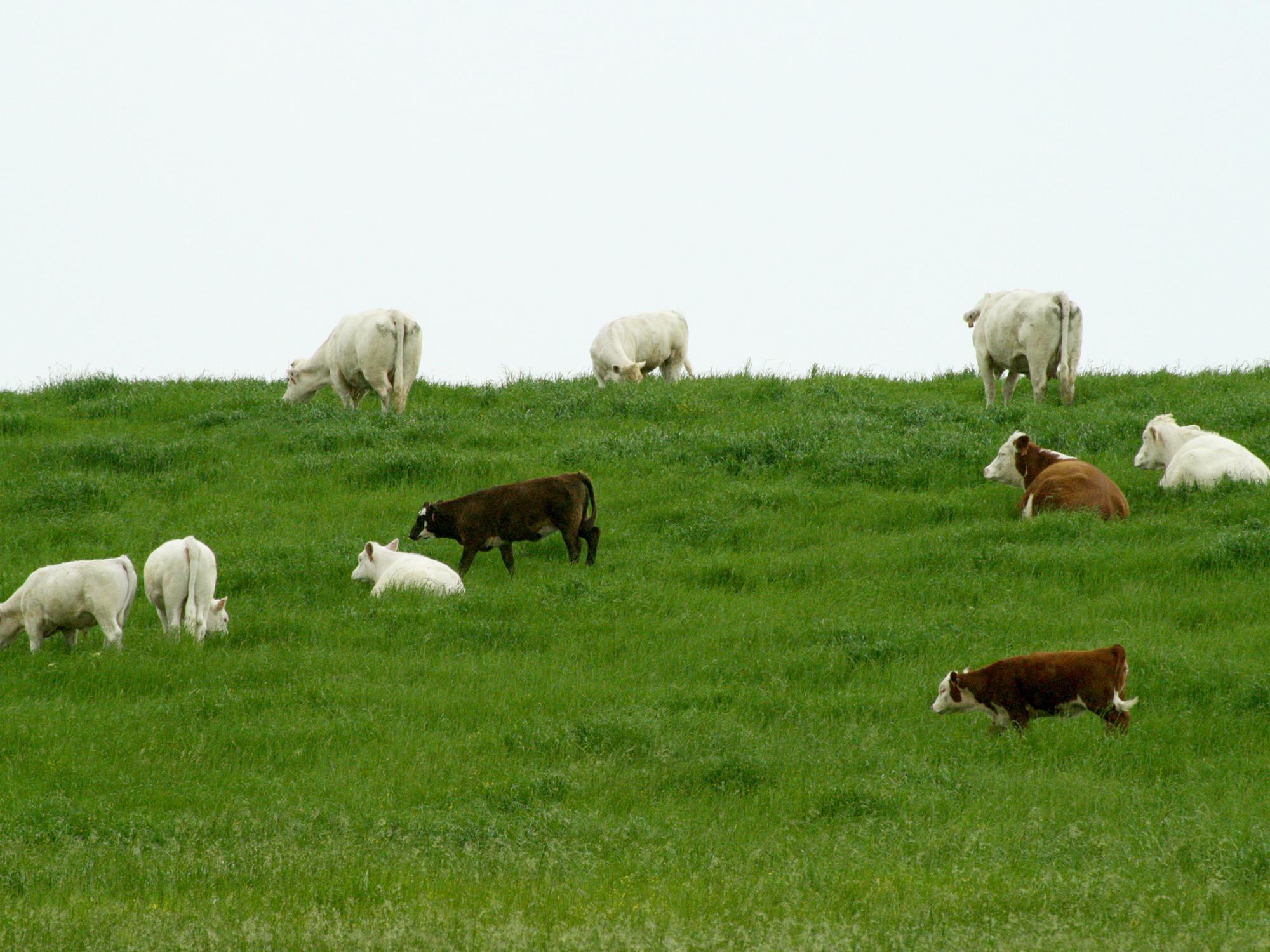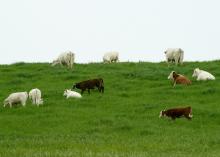Information Possibly Outdated
The information presented on this page was originally released on May 3, 2013. It may not be outdated, but please search our site for more current information. If you plan to quote or reference this information in a publication, please check with the Extension specialist or author before proceeding.
Hay producers eager for warm, sunny days
MISSISSIPPI STATE -- As pastures transition from cool-season to warm-season grasses, the state’s hay and forage producers hope for sunny days that are better suited to growing and harvesting quality crops.
“We’re finishing up with our cool season forages, which are annual ryegrass, wheat and oats with some clovers mixed in,” said Mark Mowdy, an area agent with the Mississippi State University Extension Service in Franklin County. Mowdy specializes in beef cattle and forages. “Ryegrass is our major cool-season crop, and it can be grazed or cut for hay or baleage. Right now with our rain cycles, growers are putting it up as baleage because it doesn’t have to be as dry as hay.”
Mowdy said the bad weather has decreased the quantity of the crop.
“Some of my clients were able to get just one ryegrass cutting and are already looking at how to make up for that loss with millet, sorghum-sudangrasses and other summer annuals,” he said.
The U.S. Department of Agriculture’s Crop Progress and Condition Report for the week ending April 28 showed Mississippi’s cool-season hay crop was 15 percent harvested, well below 37 percent for the previous year and the 33 percent five-year average.
“The very wet, late winter limited annual ryegrass grazing during the peak time of the winter grazing season,” said Extension forage systems specialist Rocky Lemus.
Lemus said weather conditions have stunted growth and increased rust in annual ryegrass.
“We’ve also seen an increase in weed pressure because producers haven’t been able to get into the fields and pastures for timed herbicide applications,” he said.
The lack of very cold winter temperatures may impact pest pressure.
“We anticipate that armyworms might be a problem this summer,” Lemus said. “Last year, we saw an increase in damage to Bermudagrass due to stem maggot. We recommend producers keep a watchful eye on these pests.”
While growing conditions in other parts of the country have improved, Lemus said Mississippi’s hay may still be needed in other states.
“Producers projecting sales to other states need to make sure they are not affected by the fire ant quarantine zone,” he said. “If a hay inspection is required for transporting hay, we recommend growers contact the Mississippi Bureau of Plant Industry to set up an appointment with an inspector.”
John Michael Riley, agricultural economist with MSU’s Extension Service, said U.S. hay stocks are down.
“On Dec. 1, U.S. stocks were 76.547 million tons. That’s 15.6 percent below Dec. 1, 2011, and 24.6 percent below the 2007-2011 average,” Riley said. “This is the lowest hay stocks number since 1957.”
In Mississippi, the number of hay acres decreased to 710,000 acres from 750,000 in 2012. Based on average yields for the past five years, this could drop production by nearly 7 percent.
Riley said quality is one of the factors that determine prices. The statewide average price reported by USDA for 2012 was $71 per ton, compared to the national average of $187 per ton.
“Mississippi’s prices are below the national average because our supplies are in check, hay does not travel well, freight costs are high and on top of that, there is the fire ant issue,” Riley said. “So, folks in the state have hay and are not in a jam to buy some from neighbors. That keeps the price down, and those who have extra hay may have a tough time sending it out of state.”
The state’s 2012 hay crop set a record value of $145 million.





